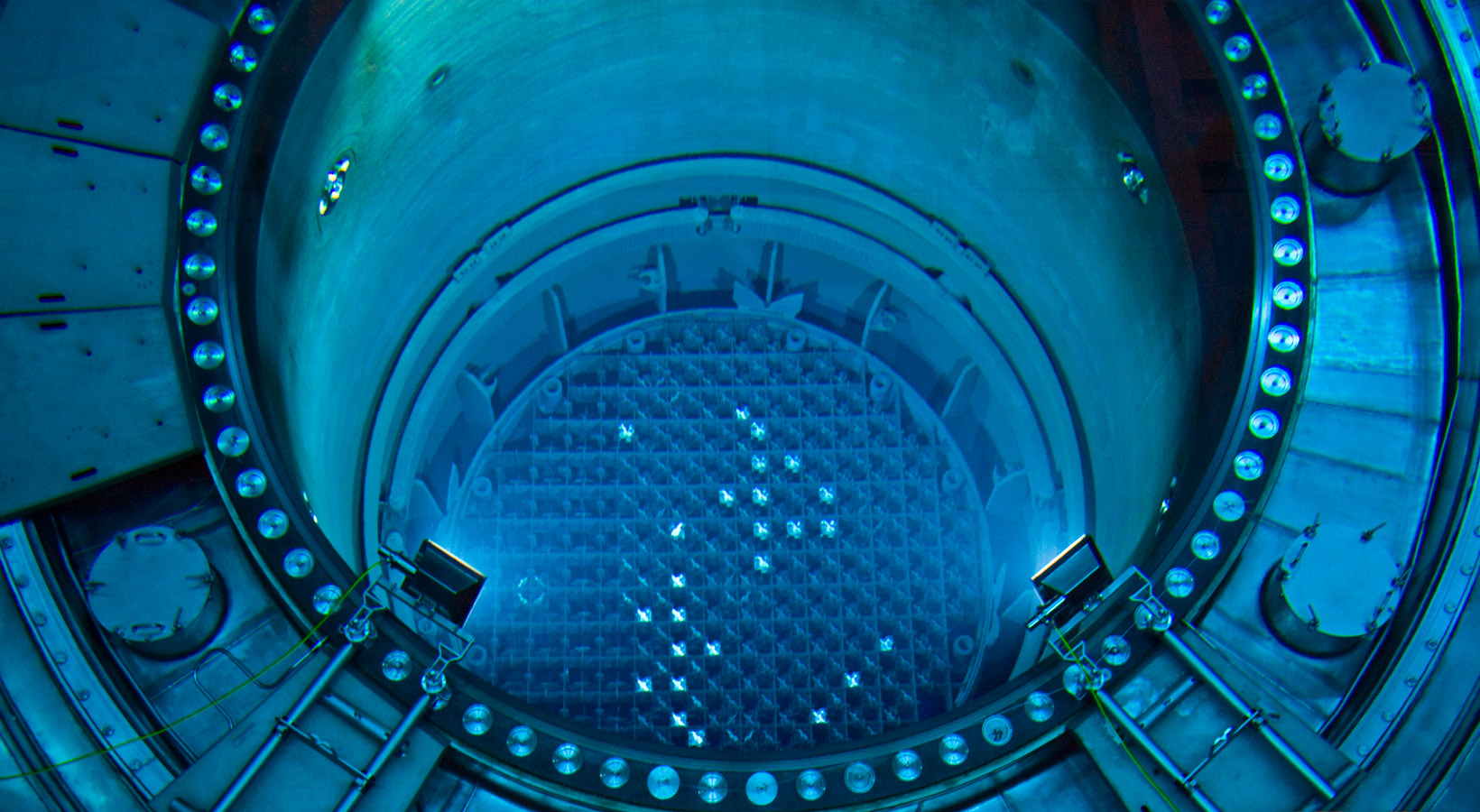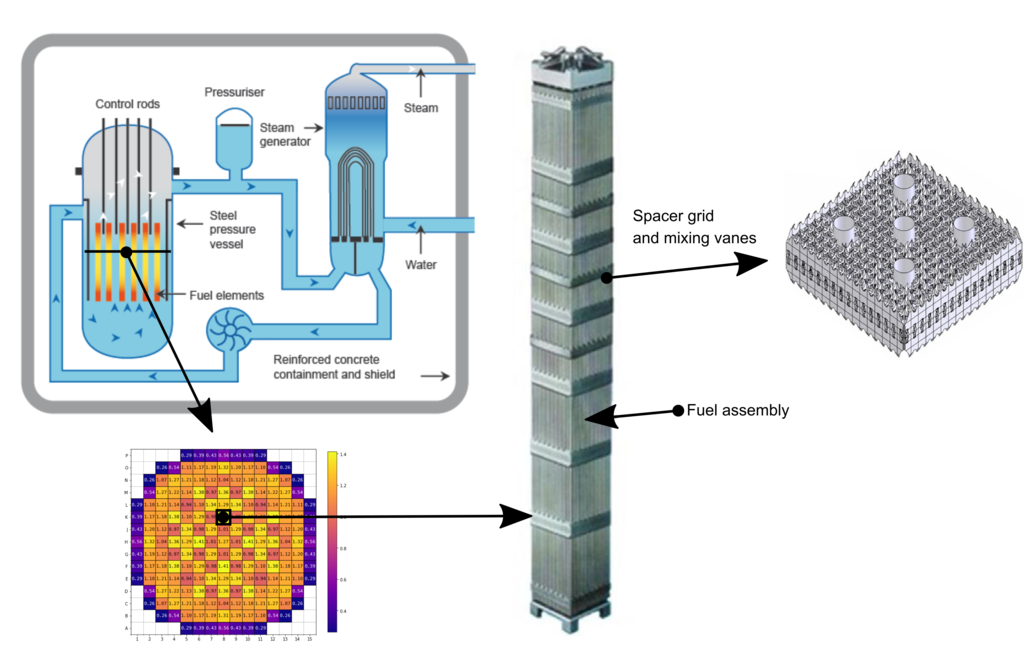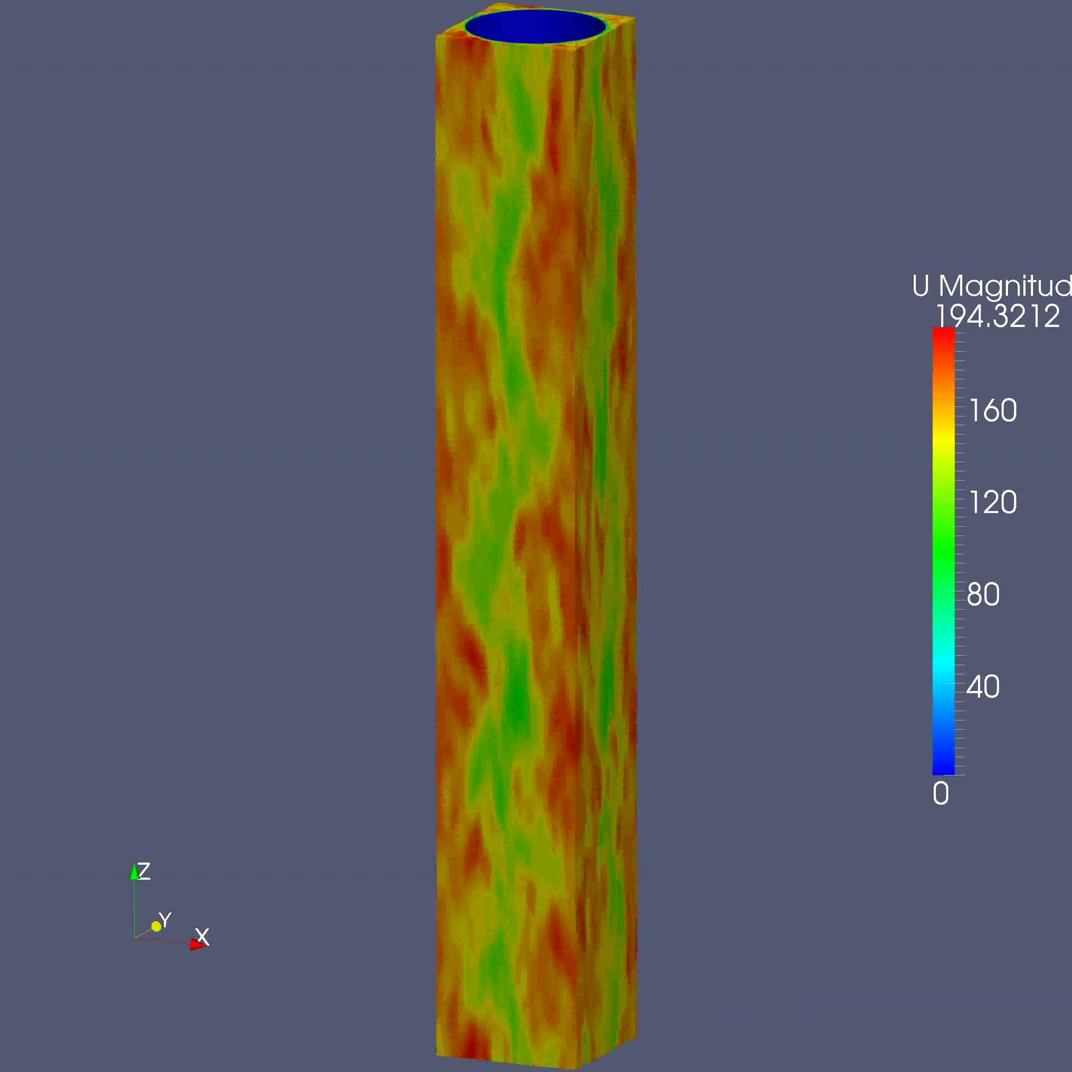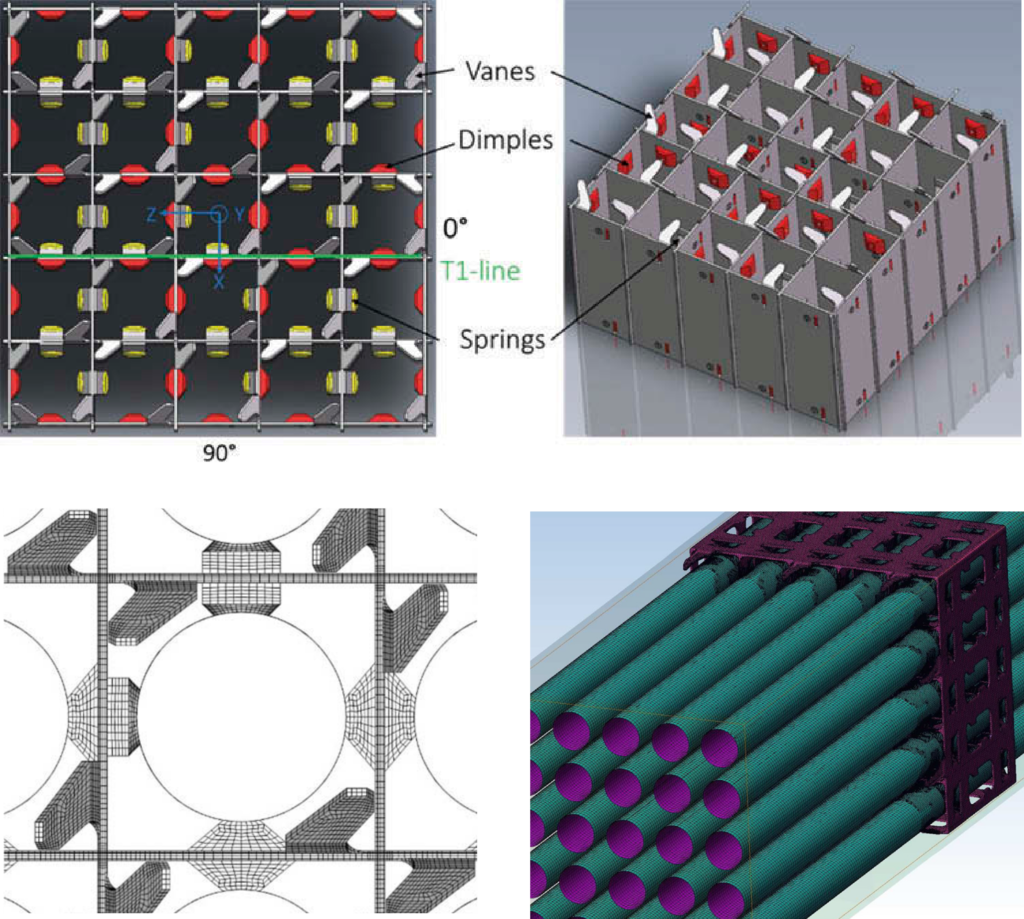Probleemstelling:
Nuclear reactor cores in Pressurized Water Reactors (PWR) are composed of an array of cylinders (i.e. the fuel rods) placed in a pressure vessel (see Figure 1). During normal operation, water is pumped at high pressure through the fuel rod bundle to evacuate the heat. As a result, the cylinders are subjected to an external, axial flow which causes the cylinders to vibrate. Vibrations due to axial flow have not been investigated as thoroughly as cross-flow, even though they provoke long-term damage such as fretting and fatigue. Fretting damage is one of the main causes of for nuclear fuel leakage which costs power utilities millions of euros. Beside nuclear reactor cores, tube bundle geometries subjected to external flow are also often encountered in heat exchangers, in particular in the shell-and-tube type. This makes this case relevant to more industries than only nuclear power generation.

Figure 1: Picture of an opened PWR reactor core.
In order to mitigate the most severe vibrations and preserve the distance between the fuel pins, the rods are placed in spacer grids. These spacer grids often have mixing vanes, introducing swirl to the flow which enhances heat transfer (see Figure 2). The spacer grids result in an increase of the turbulence intensity downstream. It is of interest to know how this turbulence evolves over the axial length because this has implications for both the heat transfer and flow-induced vibrations (FIV).
Experimental work on these tube bundle geometries exists, but experiments are expensive and the geometry might prevent access to certain locations. With the rise of computational power the last decades, the predictive capabilities of numerical simulations became available. Computational Fluid Dynamics could prove a valuable complement or alternative to experimental work, yielding detailed information on the flow-field at all locations and helping in a fundamental understanding of the flow phenomena.
In this case large eddy simulations (LES), in which all turbulence besides the very small scales is resolved and only the latter is modelled, are considered to study the effect on the flow of the spacer grid of a PWR fuel bundle. In particular it would be interesting to know how the turbulent velocities and pressures evolve in downstream direction and estimate the impact on flow-induced vibrations by applying the forces to a structural model (finite elements). The results can be compared to experimental work and other numerical research and add a valuable contribution to the understanding of the thermal hydraulics of fuel assemblies.

Figure 2: Overview of a PWR reactor and a typical fuel assembly.

